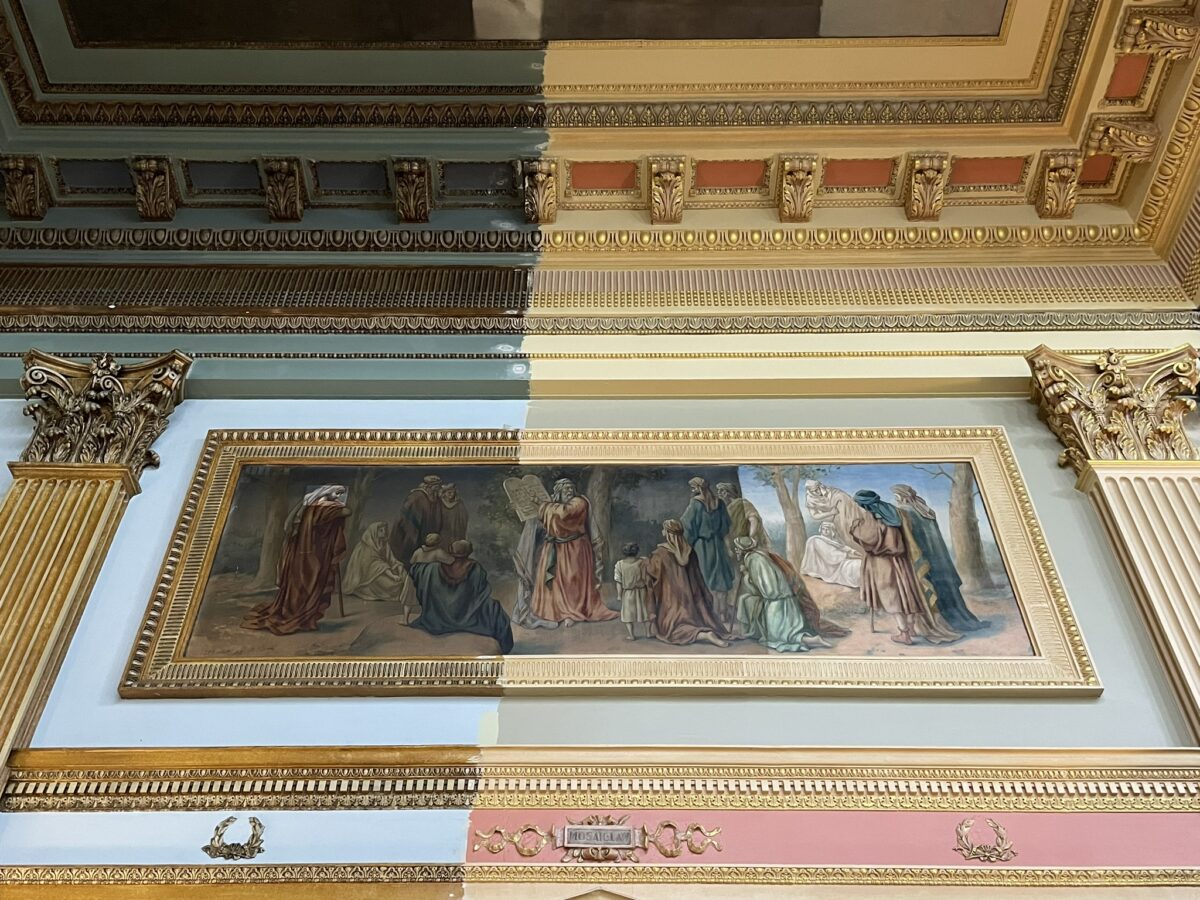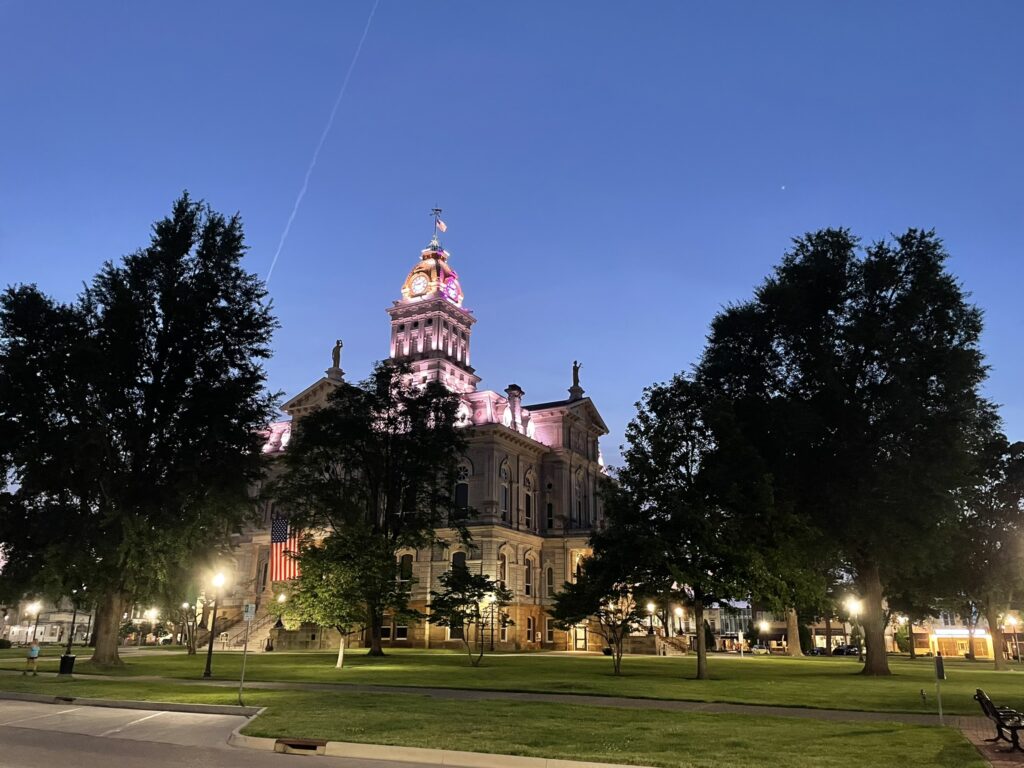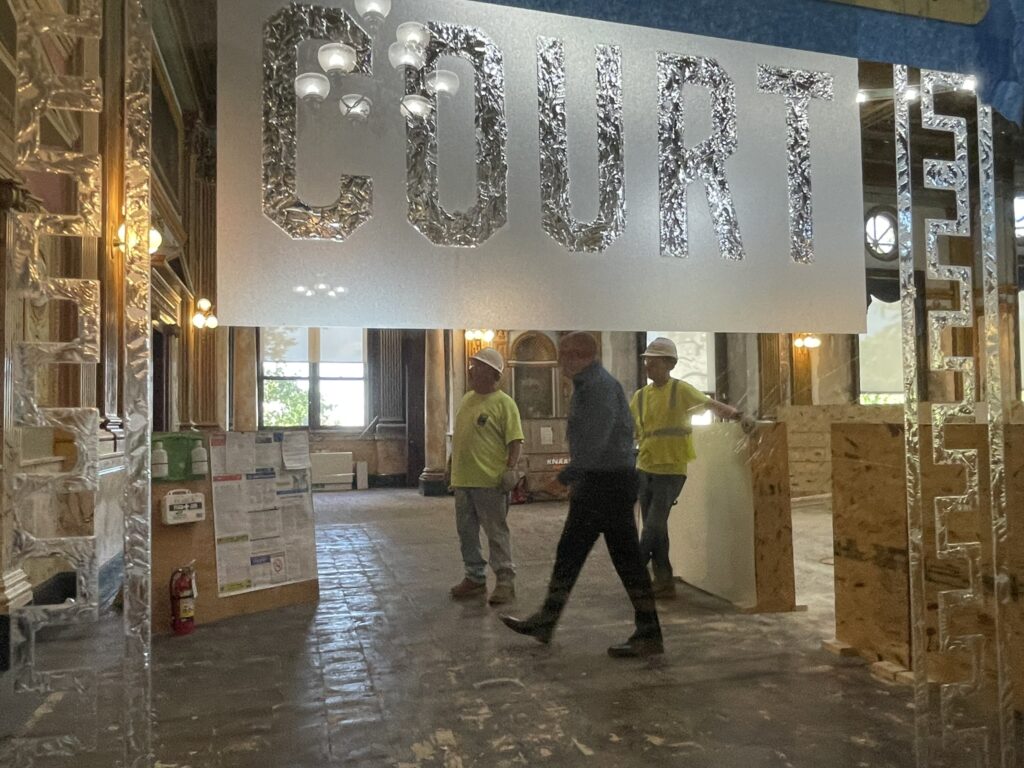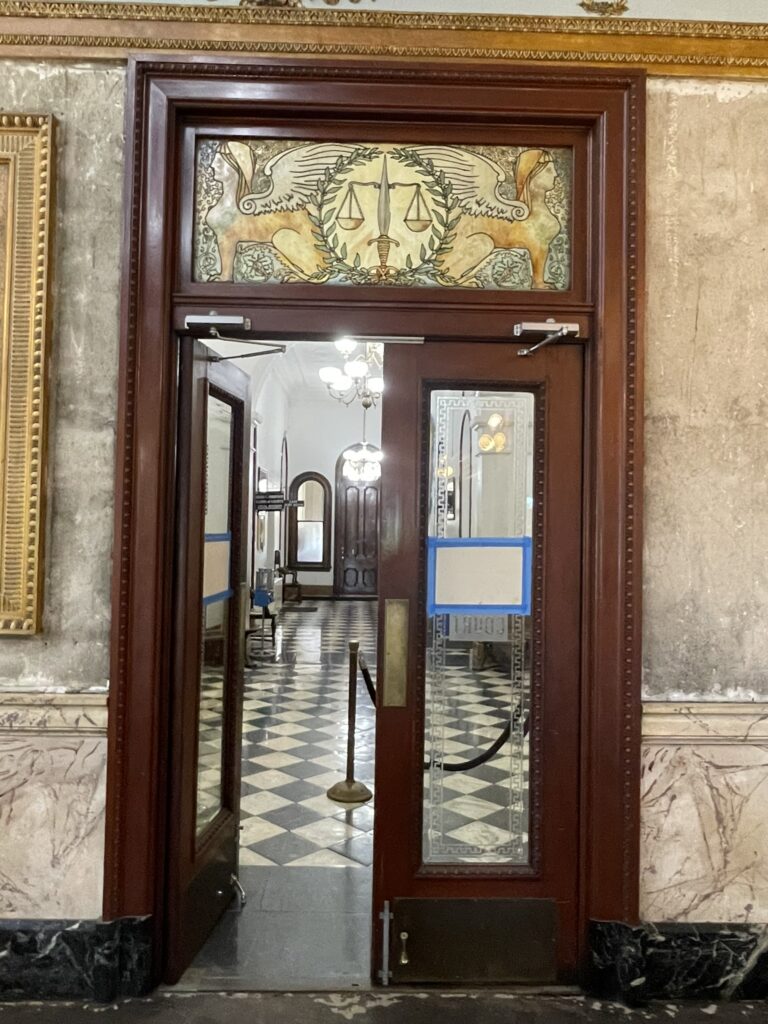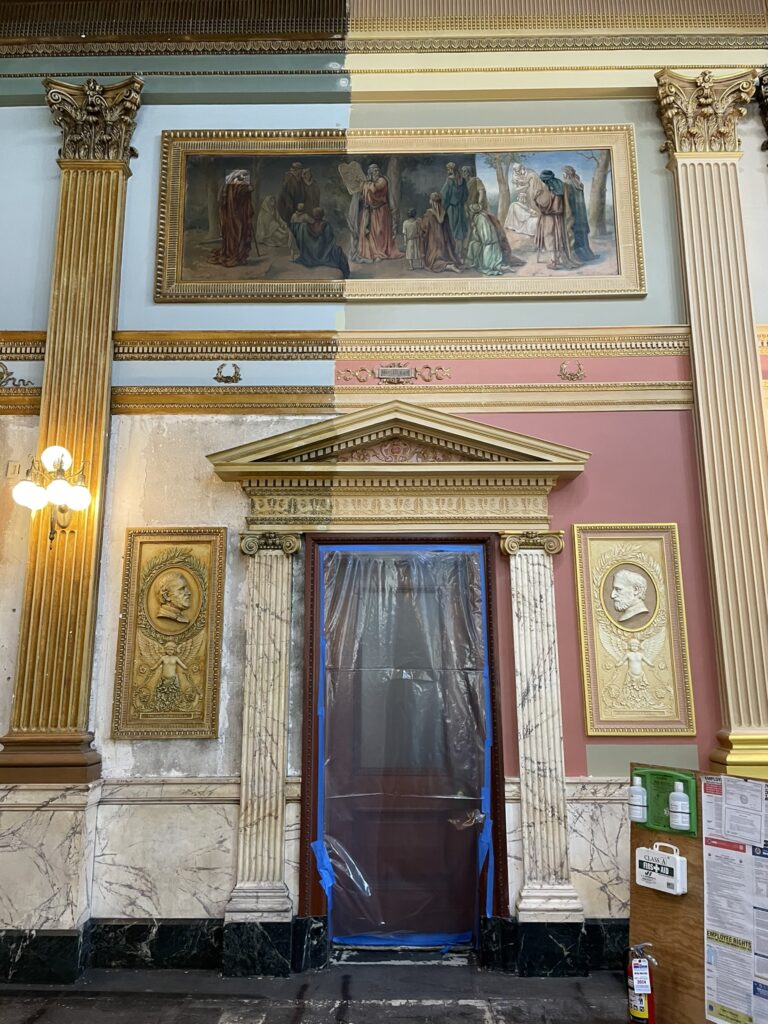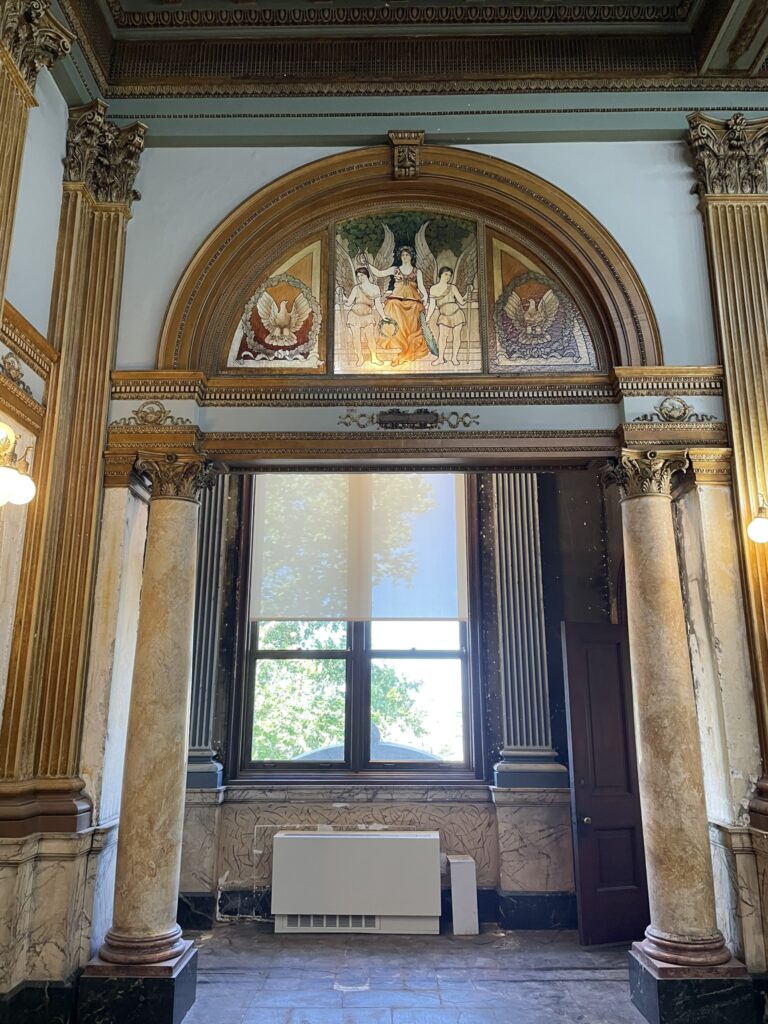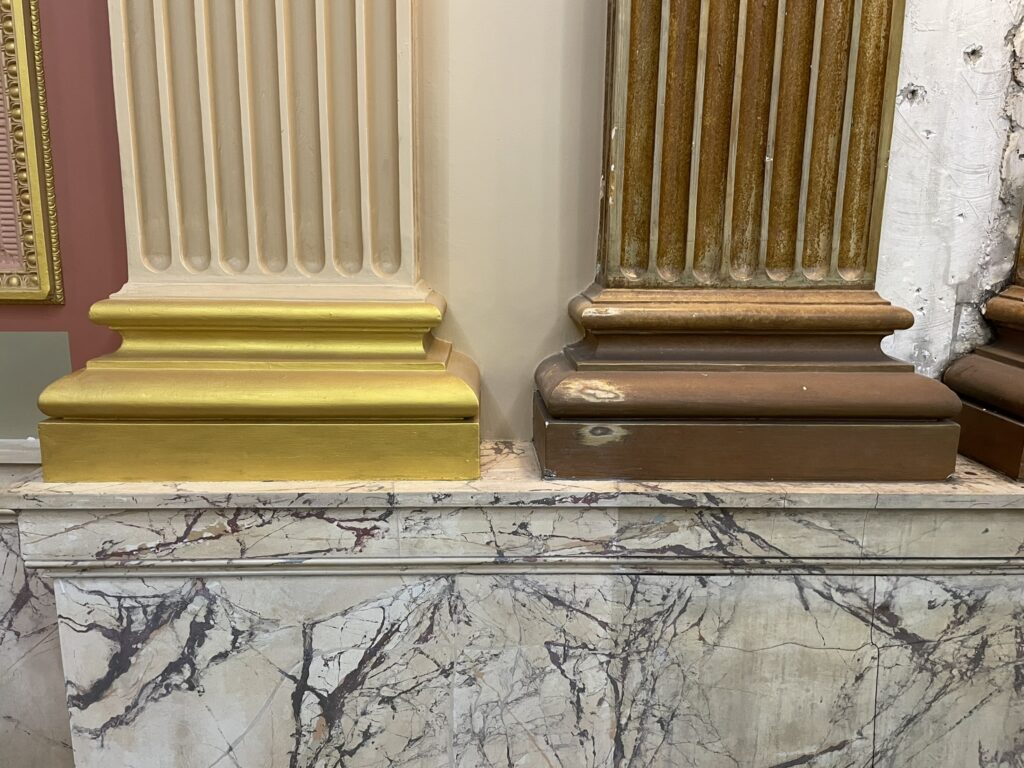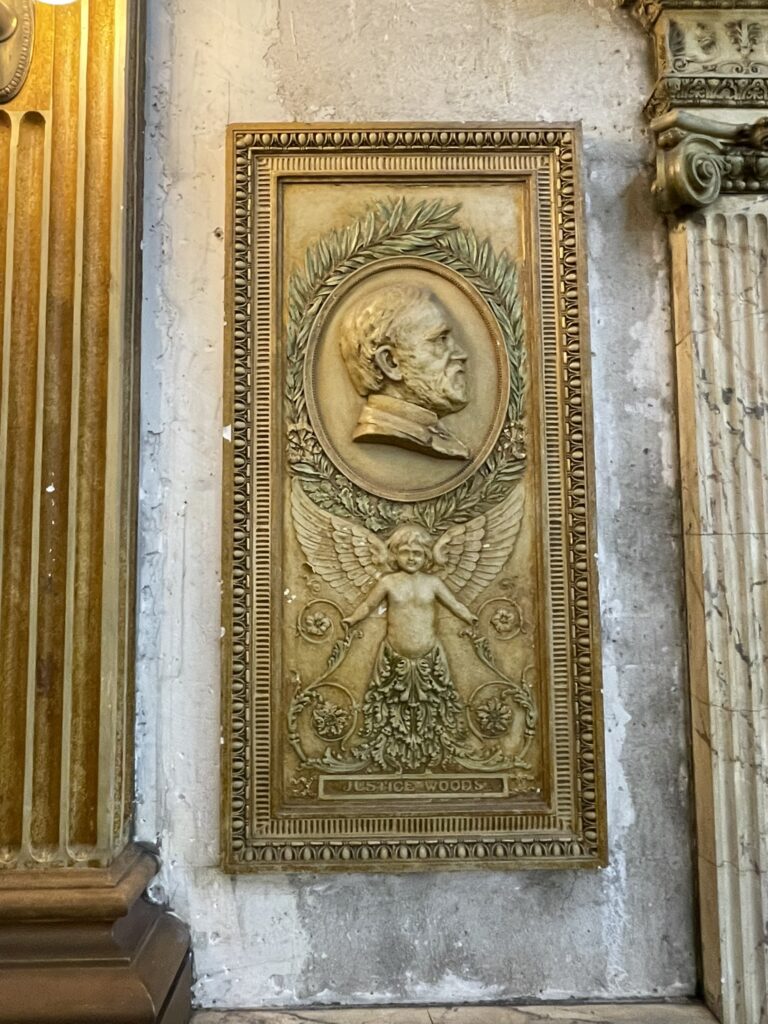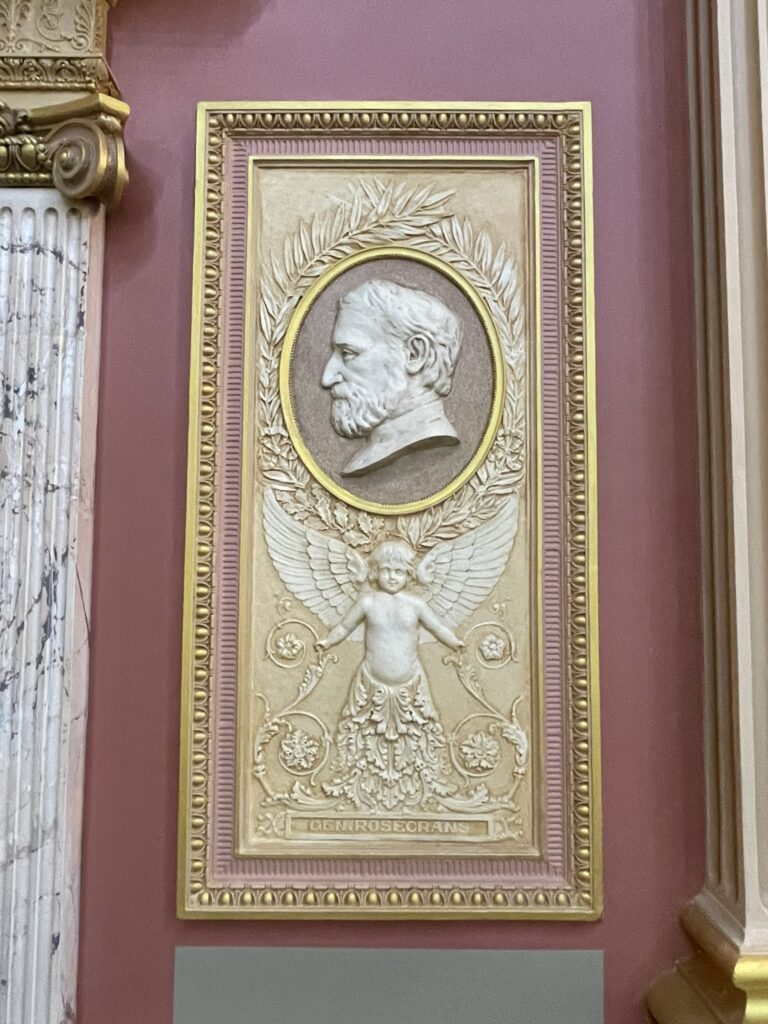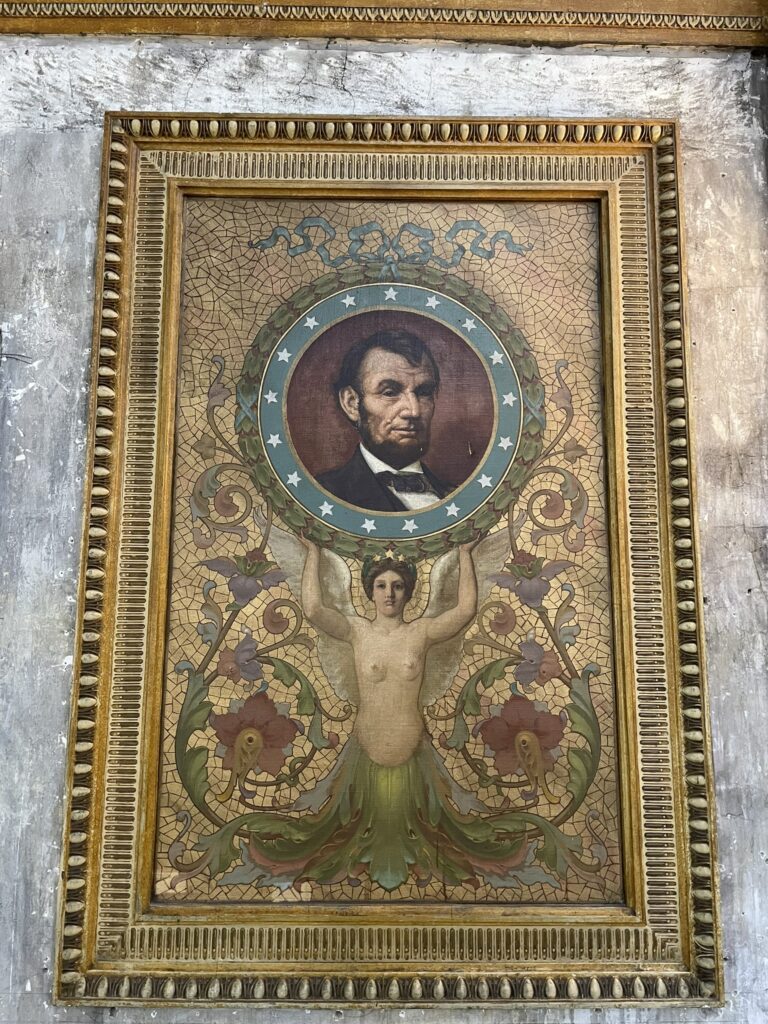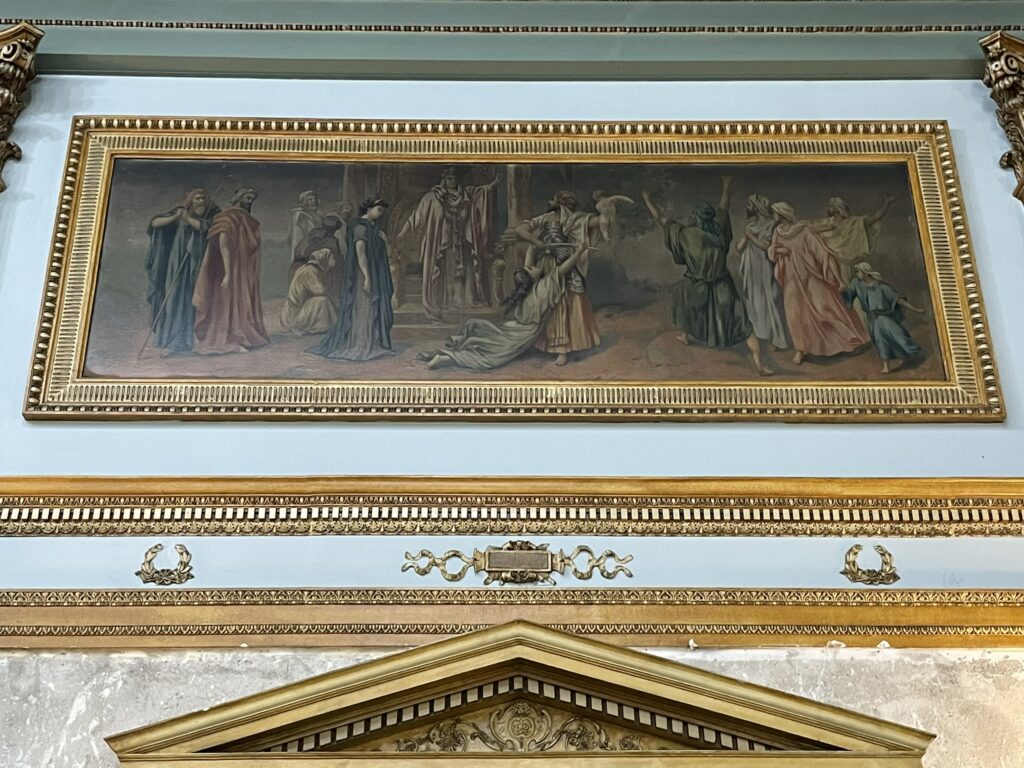The original courtroom in the 148-year-old Licking County Courthouse is filled with artwork and stained glass so ornate that even some of those accused of heinous crimes sit in awe.
Sit on church-like pews where their shackles scratch and scar the wooden benches.
Where Thomas Marcelain, the latest in a long succession of common pleas judges, has presided since 2003 – in this particular space until last month.
That’s when a work crew moved out the pews, tables, marble busts of Civil War-era American jurists and prepared for the last in a series of top-to-bottom renovation projects designed to preserve the centerpiece of downtown Newark.
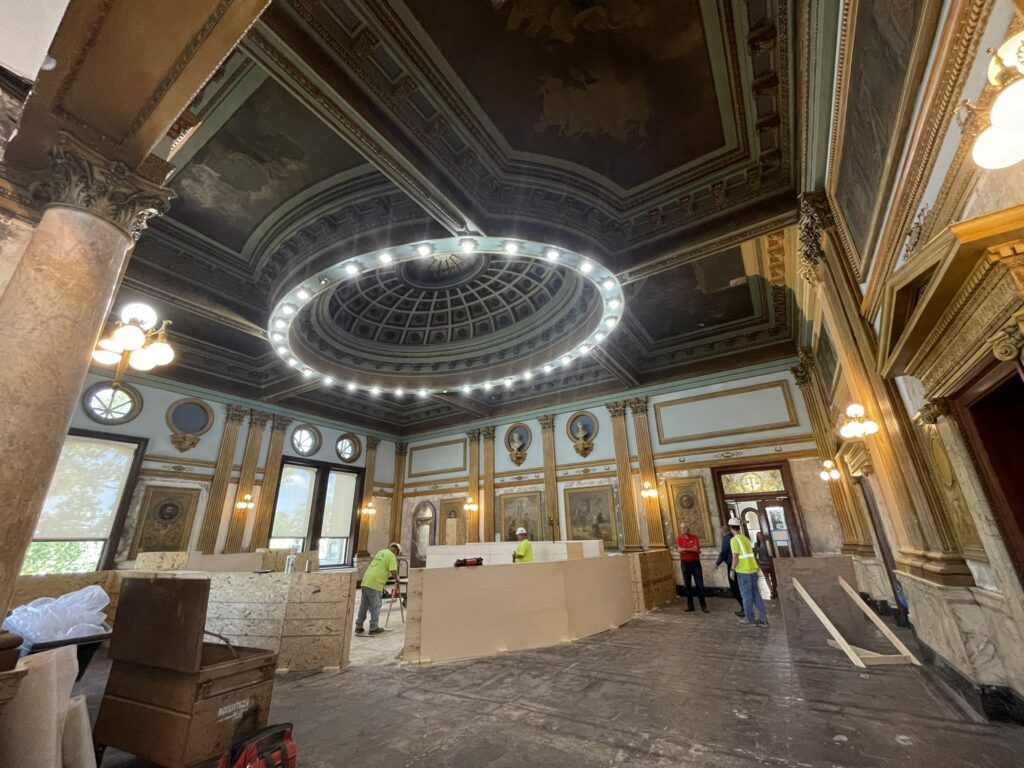
Marcelain is holding court in a basement meeting room at the County Administration Building across South 2nd Street for the next nine months while his courtroom is being restored, and he’s not unhappy about that, because he said it will be worth the wait.
“Even before this project, people were impressed with this courtroom,” he said, standing amid a construction zone where the intricately carved wooden bench he normally presides from was being encased in plywood to protect it during the work going on around it.
“It matches the majesty of the law and the importance of it, and getting it back to the way it was originally will be even more impressive,” Marcelain said, noting that he has seen criminal defendants captivated by the artwork.
The Civil War was fresh in the minds of Licking County residents in 1876 when courthouse construction began. It is the fourth courthouse on that site. The first was made of logs. The second was a two-story brick structure built in 1815. As the county grew, that building was replaced by a larger brick building in 1832. That courthouse burned down in 1875, taking a lot of early county records with it.
The cornerstone of the current courthouse was laid on July 4, 1876, in celebration of the nation’s centennial. Three years later, wooden features in the clock tower of this building also caught fire, but the building was saved and restored.

History books say that Civil War Gen. Charles R. Woods, a Newark native, led a mile-long parade on the day the courthouse cornerstone was laid, and his image is part of the artwork in the original courtroom.
Among others depicted in courtroom artwork are fellow Civil War Gen. William Rosecrans; Presidents George Washington, Thomas Jefferson, James Monroe, Abraham Lincoln and Ohioan William McKinley; as well as Benjamin Franklin, the Marquis de Lafayette; Henry Clay, who was a U.S. representative, senator and pre-Civil War-era secretary of state; and U.S. Supreme Court Justices Salmon Chase, an Ohioan, and Daniel Webster.
The courtroom also features several large murals on the walls and ceiling, including those depicting the signing of the Magna Carta, the signing of the U.S. Constitution, and one each depicting the delivery of the 10 Commandments and King Solomon’s Law.
The original courtroom art spaces allowed for additional images, which will be added during the renovation, which is to be completed in March 2025.
Scaffolding will be installed starting this week (July 15) to allow artists and historic preservation experts from the Wisconsin firm of Conrad Schmitt Studios. This is the same company doing renovation work across 3rd Street at the former Home Building Association banking building, a historic structure designed by famed architect Louis Sullivan. And Robertson Construction of Heath, the contractor for the courtroom project, is also working across the street to renovate The Arcade, one of few remaining glass-roofed shopping centers from more than a century ago.
The architectural firm for the courthouse project is Rogers Krajnak of Columbus, and Centennial Preservation Group of Columbus is restoring the pews and other wooden features.
“The changes you will see here will be stark,” said Nick Conger, project manager for Robertson Construction.
He pointed to a small portion of a courtroom wall where artists from Conrad Schmitt had cleaned and painted, and the difference is stunning between the freshly restored artistry and that which had been coated in layers of dirt and grime from decades of smoke from coal stoves and natural wear and tear.
The courtroom renovation is a $3.2 million project to install modern technology in ways that will not be seen by the public – burying wires and electrical boxes in walls and the floor – and a painstaking artistic and historic preservation undertaking to restore the courtroom to its original glory, said Tim Bubb, a county commissioner who has helped guide the renovation projects through the years.
In all, the courthouse renovation, including the courtroom, is costing the county $18.2 million, Bubb said. The work started a decade ago with a $9 million project to repair or replace exterior features such as the building’s dome 170 feet above Courthouse Square, and the roof and gables.
Also included in that first phase was new plumbing and a million-dollar elevator – expensive in part because of the challenges of installing it in a stone and brick structure built in 1876, when steel and wooden staircases were the only way up.
The second phase was a $6 million project to replace all the windows and exterior doors, tuckpoint brick and stonework, restore the lower level, update heating and cooling systems and repair the four sets of staircases leading from the square to the second floor, where the original courtroom is now the final phase of the years-long renovation.
“It’s much more than paint and carpet,” Bubb said. “In the past, they removed the spittoons, took out the gas lights and added electricity. That’s about it.
“This is an artistic renovation – putting it back like it was originally,” he said.Alan Miller writes for TheReportingProject.org, the nonprofit news organization of Denison University’s Journalism program, which is funded in part by donations from readers. Sign up for The Reporting Project newsletter here.

